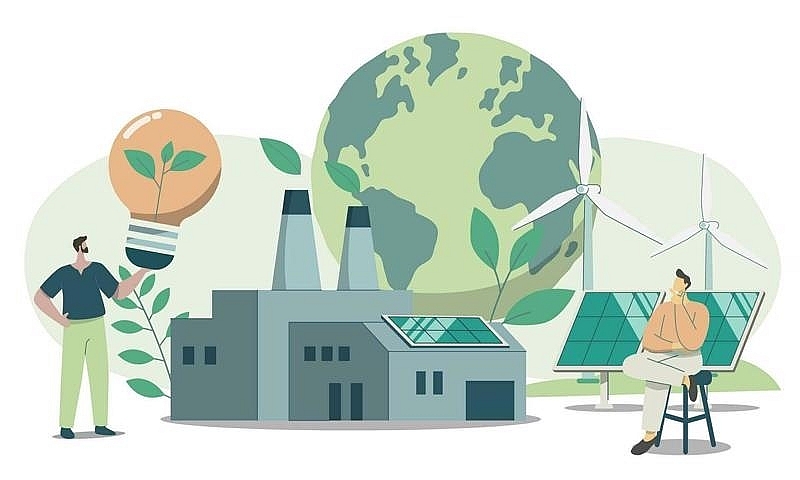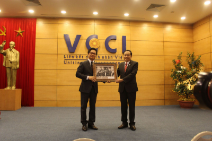Chemical companies go green to compete effectively
Chemical and fertilizer production are industries with high emissions and energy usage, making the Green standard particularly stringent for them.
 |
|
Implementing Green manufacturing helps to improve the position of the business. |
Challenges in greening the industry
Nguyen Thanh Phuong, representative of the Department of Industrial Safety and Environmental Protection (Ministry of Industry and Trade - MoIT), discussed the obstacles faced by Vietnamese companies in greening industrial practices. According to Phuong, while Vietnam has programs for a Green economy, Green growth, and a circular economy, green industrialization remains a new concept and is not yet clearly defined in legislation.
Awareness is a major hurdle, as many companies do not fully understand what green industrialization entails or how to implement it. Additionally, chemical and fertilizer companies face financial challenges in switching to greener materials, technology, and investing in eco-friendly processes. Small and medium-sized enterprises, in particular, find it difficult to invest in Green transformations due to the high costs involved, creating barriers to accessing environmentally friendly solutions.
Phuong noted that, while Vietnam is committed to efficient natural resource use and energy conservation, implementation remains fragmented and lacks coherence.
From a business perspective, Phung Ngoc Bo, Technical Director of the Vietnam Chemicals Group, highlighted three major benefits of removing pollution sources in the chemical industry. First and foremost, a cleaner and safer working environment benefits employees, enhancing productivity as workers feel more committed and effective in their roles.
The second benefit is economic. By managing environmental protection and reducing waste, companies significantly lower treatment costs, which helps reduce consumption rates and save on expenses.
Finally, adopting Green production raises a company’s profile, particularly for those participating in global supply chains. Chemical companies with effective environmental management can access demanding markets like the EU, aligning with Vietnam’s 2050 net-zero emission goal.
To move towards Green production, the Vietnam Chemicals Group focuses on five main solutions, starting with energy-saving measures. Efficient energy use not only reduces costs but also greenhouse gas emissions, a key priority for the Group. Another solution focuses on fuel efficiency.
The Group also emphasizes waste treatment and recycling per the Environmental Protection Law, particularly with products like rubber tires, batteries, and packaging. Additionally, they are raising environmental awareness among employees to encourage proactive environmental protection and resource-saving practices.
For the fertilizer industry, Phung Ha, President of the Vietnam Fertilizer Association, noted that Green production has become a necessary trend for fertilizers specifically and chemicals in general. Green production ensures sustainable development and enhances market competitiveness.
"Fertilizers are one of the most crucial agricultural inputs," said Ha. "According to the FAO (Food and Agriculture Organization of the United Nations), inputs include fertilizers, pesticides, seeds, and other techniques, with fertilizers accounting for around 40-70% of input value. When talking about Green production, connected to Green agriculture, inputs must be energy-efficient, conserve natural resources, and ensure sustainable outputs.”
Necessary steps to advance green industrialization
Nguyen Thanh Phuong noted that companies must focus on several key areas to promote Greening in industry. Firstly, they should fully comply with environmental protection regulations, climate change response, and emissions reduction.
Businesses must also consider options for emissions reduction and energy savings to optimize production costs. Adopting cleaner production solutions will provide clear benefits, enabling companies to meet environmental standards.
Additionally, companies should explore Green projects and utilize State policy support, like Green credit and Green bonds. The Ministry of Natural Resources and Environment is drafting a decision to present to the Prime Minister for approval on environmental criteria, providing Green project funding support, particularly through Green credit and bonds.
“There is no alternative but for companies to conduct their own research and keep up with new information to find solutions and secure investment sources for their projects,” Phuong emphasized, adding that the MoIT is currently studying and proposing core components related to industrial Greenification, such as defining Green industry and setting indicators to measure the Green level of industrial sectors.
This research aims to identify current opportunities and challenges, suggesting new policies to promote industrial Greenification in Vietnam through 2030.








